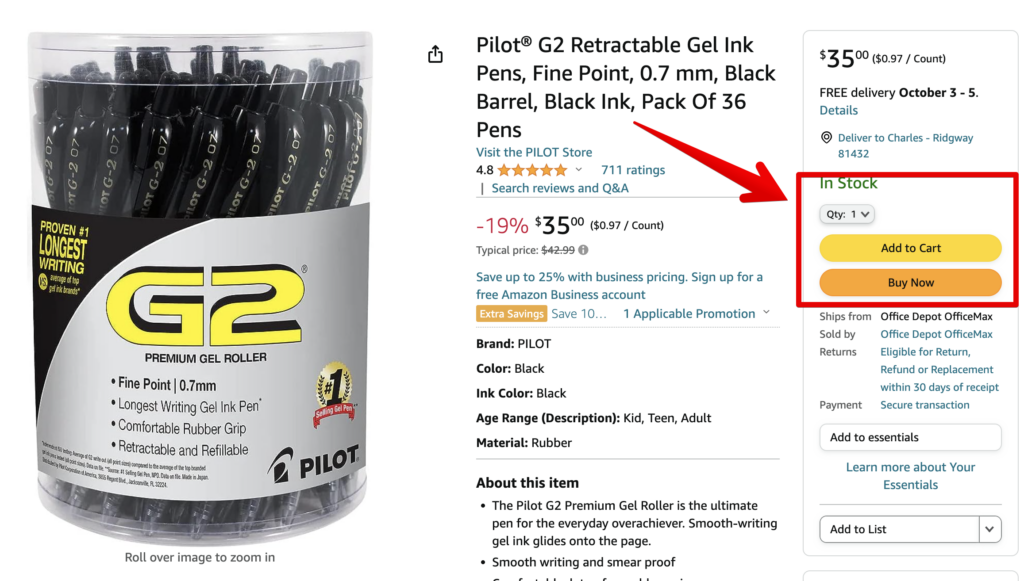Amazon Under Fire: FTC Antitrust Lawsuit Takes Aim at Amazon’s Core Business Model

Just a few days ago, a new lawsuit was filed that could dramatically alter the ecommerce landscape and impose restrictions on one of the biggest companies in the world. The Federal Trade Commission and 17 states have accused Amazon of abusing its massive power and influence.
In the lawsuit filed on Tuesday, the FTC indicates that it feels that Amazon not only broke the law, but that in doing so is eliminating fair competition, and ultimately raising prices for consumers. “Our complaint lays out how Amazon has used a set of punitive and coercive tactics to unlawfully maintain its monopolies,” FTC Chair Lina Khan said in a statement.
In a rebuttal the same day, Amazon said it would contest the lawsuit, and somewhat understandably responded that the government – in this case the FTC – was out of line and simply didn’t understand that the changes that the FTC was trying to bring about would serve to raise prices for consumers.
The states joining the FTC in the lawsuit are Connecticut, Delaware, Maine, Maryland, Massachusetts, Michigan, Minnesota, New Jersey, New Hampshire, New Mexico, Nevada, New York, Oklahoma, Oregon, Pennsylvania, Rhode Island and Wisconsin.
Importantly, the two main ways the FTC said Amazon was breaking the law are at the very foundation of Amazon’s ecommerce business model. In this lawsuit, by targeting Amazon’s use of the Buy Box to prioritize sellers, and their focus on the ultra-fast delivery promised by their Prime shipping platform, the FTC is essentially taking aim at how Amazon does business,
Amazon sellers are well aware of the importance of the Buy Box. It’s ground zero for a successful ecommerce business. As far as Prime shipping is concerned, it’s also one of the first boxes that Amazon shoppers check as they take a closer look at a listing.
Both are critical to the success of an online business.
The FTC Says that Amazon is Attempting to Control Prices
Probably.
I know that one of the reasons that I go straight to Amazon to shop is not having to worry about paying too much. Still, the FTC has said that Amazon discourages third-party sellers on its site from offering discounts off of Amazon by controlling the “Buy Box,” a critical, and fought-over piece of valuable ecommerce real estate.

The lawsuit implies that if an Amazon product is offered for less on another site, Amazon strategically removes the Buy Box button for that seller on its site and replaces them with a less appealing design, lower on the Amazon listing – and in an area cluttered with other button options – that is much less likely to be clicked by a prospective buyer.

The FTC’s argument is that for sellers, a seat at the Amazon ecommerce table is so lucrative that they will simply terminate the discounts they offer on other sites to maintain their standing (and the Buy Box) with Amazon. Their concern is that this raises prices for consumers and makes it harder for other sites to compete on price.
Shoppers Have Been Trained to Expect Prime Delivery
With an estimated 170 million Americans enjoying Prime memberships, Fulfillment by Amazon is a very tall stepping stool for online sellers hoping to have success on the increasingly competitive marketplace.
The product listings that are sold through FBA receive a “Prime” check-mark logo, and because of that, are much more visible on the Amazon product page. “The Prime designation makes sellers’ products more discoverable — and therefore likely to be purchased,” the F.T.C. said.
The F.T.C. says that by “forcing” sellers to use FBA, Amazon is raising prices for customers and blocking competition.
Amazon’s Response
In their rebuttal, Amazon said that, “filing a misguided lawsuit against Amazon would, if successful, force Amazon to engage in practices that actually harm consumers and the many businesses that sell in our store—such as having to feature higher prices, offer slower or less reliable Prime shipping, and make Prime more expensive and less convenient.”
One thing is clear, in the two decades since Amazon opened up their marketplace to other businesses – effectively inviting them to sell alongside and compete with them – sellers have gone from 0% to over 60% of sales on Amazon.
At Canopy Management, except for the Amazon sellers that we work with and are dedicated to helping become kings and queens of their Amazon categories, we don’t really have a dog in this fight. Still, we will continue to monitor these developments as they unfold.
Until then, check back here to keep up to date with the latest in ecommerce, and if you want to talk to an Canopy Management Amazon agency expert about what this might mean for your business, we’re here for you.



